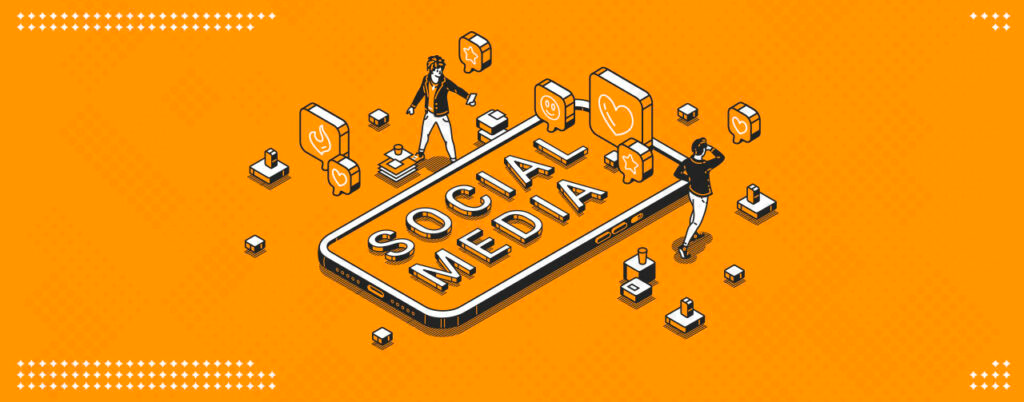5 Top Changes in The Workplace Coming In 2023

Changes in the workplace are coming fast. Since the Covid pandemic disruption of 2020, businesses have had to adapt systems, processes, and employee practices to new ways of working. Most companies assume that the only notable differences involve hybrid and remote working, but the changes go deeper than that.
Technology advancement in business is exponential, and with AI (Artificial Intelligence) in the media spotlight, irreversible changes are fast approaching. More companies are embracing blockchain technology, new Web3 startups are springing onto the horizon, and workplaces of the future may look entirely different today.

Contents
- Why are Changes in the Workplace Happening?
- Long Held Beliefs are Changing (or are they?)
- 5 Ways Workplaces Will Change In 2023
- Bonus Tips for Managing Changes in the Workplace
- Conclusion: 5 Top Changes in The Workplace Coming In 2023
Why are Changes in the Workplace Happening?
Workplace changes are across all industries. As companies face a more demanding workforce, the challenges of maintaining best practices mean that some companies aren’t prepared for the defragmentation of the workplace as we once knew it.
Whether you’re a “brick-building” business, an NFT project, DeFi, Fintech, metaverse or crypto project, learning about the changes in the workplace for 2023 will help better prepare you for adapting systems and processes.
The workplace has been changing incrementally. We have multiple generations of employees, a diverse mix of cultures and a growing sense of unease at working the nine-to-five grind until retirement. In addition, people want more from their work and crave a sense of meaning and purpose.
For the employer, managing change in the workplace is like trying to hold a slippery eel with oily hands. The rules keep changing. When employees are unhappy, they disengage and look for employment elsewhere.
New Web3 startups focus on benefiting from technological advancement and having a handle on creating a healthy workplace where employees feel valued and appreciated. However, we cannot ignore the devastation that COVID left behind. It disrupted an already-changing workplace and forced employees and employers to cooperate, trusting each other to maintain productivity and efficiency when working remotely.
Long Held Beliefs are Changing (or are they?)
The myth of the office environment as the best for collaboration and productivity fell apart during the COVID pandemic. Moreover, as employees discovered the joy of a healthy work/life balance, employers accepted that remote working wasn’t as “bad” as they thought it might be when they could not monitor employee productivity.
As we finally become used to not wearing masks in public and employees feel happier working from home, some public companies are mandating a “back to the office” policy for full-time working or several days a week. Perhaps they believe that “getting back to normal” will restore a balance that probably never existed except in their heads or the HR department.
Examples of companies mandating back to the office: –
- Apple
- Amazon
- Citigroup
- Disney
- Goldman Sachs
- JP Morgan
- Salesforce
- Starbucks
- Uber
Unsurprisingly, many employees are unhappy about the mandate.
Elon Musk told Twitter employees he would accept their resignation if they refused to comply. Likewise, Apple employees hit back, stating they had done exceptional work from home, and Amazon employees’ created a petition after their Slack channel blew up with anger at the company’s decision.
Organisations’ memories appear short, forgetting that in 2020, almost 48 million employees resigned to find better jobs, which increased to over 50 million in 2021.
In Web3, demand exceeds supply, and that’s unlikely to change for a while. Moreover, whilst many companies are cutting their workforce, if candidates have the right skills, there are multiple Web3 careers for their choosing.
5 Ways Workplaces Will Change In 2023
#1: Employees are Upskilling
Sales of online courses are at an all-time high. As employees clawed back travelling time by working from home, many considered how they felt about their careers. With higher inflation and exploding interest rates, utility bills, mortgage and rent payments, people want to create an emotionally and financially rewarding career.
With declining engagement and retention rates, companies can use employees’ desires for personal and career development by creating in-house opportunities. It may seem a daunting task, but there are options available, such as: –
- Hire in-house or external trainers
- Pay for employees to train externally
- Offer incentives for learning
- Provide job shadowing opportunities
- Ask employees what they want and how you can help
#2: Hybrid Working
Not every employee has suitable facilities for a home office, and others discovered the isolation of working alone did not suit their personality. In addition, as companies worried about monitoring productivity, employees found daily video meetings exhausting. “Zoom Fatigue” became a genuine problem causing stress and anxiety for home workers.
To keep employees happy and productive, consider the options: –
- Offer hybrid working, and allow the employee to choose how many days they want to work from home and office
- Pay for an employee to hire a local workspace such as WeWork.
- When interviewing candidates, clarify their preferred way of working
#3: Embrace Technology
When ChatGPT launched, within a month, the user base exceeded 100 million, more than the entire population of the United Kingdom. There is a clear division between people, those who love technology and those who fight against the inevitable changes.
Likewise, blockchain technology is expanding exponentially. Metaverse startups, NFT projects and other Web3 companies are opening access to new business models, for instance, using virtual and augmented reality for workplace processes. For example, instead of tedious Zoom or Google Meets, why not hold team meetings in a purpose-built metaverse, where employees create their own avatars?
Over the next decade, AI technology will change the face of the workplace, with robots fulfilling many daily functions.
Instead of worrying about technological advancement for a future workplace, focus on preparing to attract top talent who can work with advanced AI, machine learning and blockchain technology. Above all, the organisations with the most to offer, including benefits and technology, will stay ahead of the competition.

#4: Increased Cyber Security
As technology advances, hackers develop ever-sophisticated methods for infiltrating vulnerable networks.
The data below is from AAG, related to 2022 hacks: –
- Data breaches cost businesses around $4.35 million
- In the first six months of 2022, there were over 235 million ransomware attacks globally
- 39% of UK-based companies reported a cyber attack
- 1 in 10 United States businesses DO NOT have insurance to protect against cyber attacks
- Phishing is the most common cyber threat to businesses and individuals
The demand for qualified cyber security engineers exploded in 2022 as well-known platforms such as Axie Infinity. Hackers escaped with over $600m of digital assets after an Axie employee clicked on a fake job offer in a PDF document.
Start protecting the organisation’s vulnerabilities now and protect your assets before technology explodes again.
#4: Employee Benefits
EBRI research reports that 78% of candidates said an excellent employee benefits package would influence their decision about accepting a job offer.
In addition, 69% of employees would choose an employer over another if the organisation offered better employee benefits. Moreover, 75% of employees stated they would likely stay with an employer offering an employee benefits package (Source: employeebenefits.co.uk.)
You may think providing better employee benefits is expensive. Still, it can be an excellent strategy for securing the best candidates wanting to work with your company instead of the competition.
Instead of creating a blanket employee benefits package, have a selection of benefits so your employees can choose those important to them. The following are twenty of the top employee benefits: –
- College grants and scholarships
- Paid training and development
- Travel and spending expenses
- Unemployment insurance
- Investment opportunities
- Student loan repayment
- Paid time off / holidays
- Remote work flexibility
- Life insurance policies
- Performance Bonuses
- Mental health support
- Company equipment
- Wellness Programs
- Retirement planning
- Company vehicle
- Disability benefits
- Medical benefits
- Extended leave
- Paid sick leave
- Family Leave
#5: Improved Mental Health Practices
We cannot ignore the growing unease about the cost of living, tech giant layoffs and constant media coverage about AI (artificial intelligence) taking over employee jobs in the future.
Rising levels of stress and anxiety have an impact on productivity. It can also affect physical health, resulting in paid sick leave for long periods. In addition, employees with mental health issues are less engaged and may seek alternative employment if another company is more attentive to their mental health needs.
So, what mental health options should you offer as an employer? The answer depends on many factors, such as employee numbers, the industry, the balance of office and remote workers and more.
Despite the initial euphoria of remote working, employees soon found that isolation, video meetings and home distractions added to mental health issues.
Primarily, the best thing is to ask your employees what they want and need. However, that’s not a perfect solution unless employees understand what may help is available. Here are a few ideas: –
- Counselling or coaching
- A 4-day week
- Meditation, Yoga or Tai Chi sessions
- Flexible working
- Childcare
- Fun team-building days
- Fewer meetings
- Relaxed dress code
- Bring a pet to work days
- Pay for remote offices local to employees

Bonus Tips for Managing Changes in the Workplace
As there are significantly more than five changes in the workplace, here are nine more ideas for dealing with change in the workplace of the future.
Bonus Tip #1: Diversity, Equity, and Inclusion: Implement DEI (diversity, equity and inclusion) initiatives. Likewise, encourage an environment for open discussion on workplace challenges such as racism, sexism, ageism and biases.
Bonus Tip #2: Improve Onboarding: Start as you mean to go on and provide the best employee experience from day one.
Bonus Tip #3: Improve Communication: remove the “them and us” hierarchy with management and staff. Encourage transparency and trust with open discussion without judgement or penalties.
Bonus Tip #4: Offer Incentives: Regardless that employees need an income to survive challenging financial times, incentives need not be monetary. Sometimes recognition, promotion, a gift or a bonus goes a long way to employees feeling appreciated.
How not to treat employees:
When Julie told her manager she was unhappy about travelling two hours to a thirty-minute meeting, her manager replied that if she wasn’t happy, he could soon find someone to take her job.
Offering a job to a candidate is no longer enough to ensure their loyalty. Show appreciation for their work with something tangible and a pat on the back for good efforts.
Bonus Tip #5: Pay Transparency: Correct wage gaps in the workforce and, above all, do not differentiate gender pay structures for the same job.
Bonus Tip #6: Consider a 4-day Week: The UK is running a 4-day week pilot scheme to test its efficacy. Most employers report enhanced retention rates, happier staff and no reduction in productivity.
Just because the working world has always had a 5-day week doesn’t mean it should continue in the future. In addition, using AI software can help employees become more efficient.
Bonus Tip #7: Research Online Tools: Most organisations utilise project management software, but much more is available to help employee productivity.
Bonus Tip #8: Give your Employees More Autonomy: Employees no longer tolerate micromanagement. They want to take responsibility for their workflow, make more choices and implement ideas.
Bonus Tip #9: Stop Attrubuting Time to Value: Sadly, some employers still measure an employee’s value by how much time they spend at their desk working. For example, Kirsty, a copywriter, told a story of her boss taking her aside to admonish her for posting on LinkedIn during work hours. Kirsty replied that she used auto-scheduling software for social media posts and had only commented on a post while making a cup of tea during her break.
Kirsty had bought significant value to the company, with her work generating extra sales for the core products. She said her boss’s reaction made her feel undervalued and untrusted.
Conclusion: 5 Top Changes in The Workplace Coming In 2023
To summarise, the workforce of the future will not be the same as now. Companies that manage workplace change and implement best practices for an evolving workforce will attract top talent.
Faced with the uncertainty of robots taking over our jobs, the growing unease in a changing workplace requires careful management. Watching how employees respond to the tech giants insisting they return to the archaic system of a 9 to 5 grind in an office will be interesting. Indeed, in time, we may see another wave of employees deciding that they will be the ones choosing where and how they work.
If you’re an employee dissatisfied with your job, contact the CB recruitment team to discuss your options for a Web3 career. Likewise, if you are a company preparing for changes in the workplace and seeking top-tier talent, we can connect you with the best people in the space.
About Author

Jan Barley
Jan is a SEO copywriter, brand advisor, content strategist & case study specialist writing for crypto, recruitment, and SaaS companies. Jan lives in the Cotswold's UK with two rescue dogs. Since 2020, Jan has written hundreds of SEO articles for various crypto companies including CB Recruitment & Coin Bureau.
Top Posts

Why Employee Benefits Are Important To Retain Your Workforce
Why are employee benefits important? Since the great resignation of 2021, employees have become sign...

10 Popular Time Management Interview Questions: How to Answer
Why do companies ask candidates time management questions? Effective time management in the workplac...

How to Find the Best Recruitment Consultant (2023)
When looking for a reliable recruitment consultant, you may be concerned about whether they genuinel...


